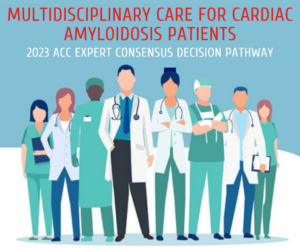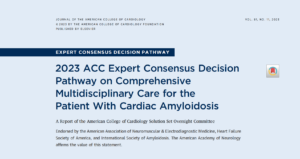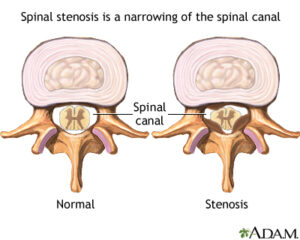
We would like to thank the Cleveland Clinic for this information, unless specifically noted otherwise.
WHAT IS HEART FAILURE?
Heart failure occurs when the heart muscle doesn’t pump blood as well as it should. Heart failure can occur if the heart cannot pump (systolic) or fill (diastolic) adequately.
Almost six million Americans have heart failure, and more than 870,000 people are diagnosed with heart failure each year. Heart failure (congestive heart failure) is the leading cause of hospitalization in people older than 65.
WHAT ARE THE TYPES OF HEART FAILURE?
There are many causes of heart failure, but the condition is generally broken down into these types:
Left-sided heart failure
Heart failure with reduced left ventricular function (HF-rEF)
The lower left chamber of the heart (left ventricle) gets bigger and cannot squeeze (contract) hard enough to pump the right amount of oxygen-rich blood to the rest of the body.
Heart failure with preserved left ventricular function (HF-pEF)
The heart contracts and pumps normally, but the bottom chambers of the heart (ventricles) are thicker and stiffer than normal. Because of this, the ventricles can’t relax properly and fill up all the way. Because there’s less blood in the ventricles, the heart pumps out less blood to the rest of the body when it contracts.
Right-sided heart failure
Heart failure can also affect the right side of the heart. Left-sided heart failure is the most common cause of this. Other causes include certain lung problems and issues in other organs.
WHAT ARE THE SYMPTOMS OF HEART FAILURE?
Symptoms of heart failure include:
- Shortness of breath.
- Feeling tired (fatigue) and having leg weakness when active.
- Swelling in ankles, legs and abdomen.
- Weight gain.
- Need to urinate while resting at night.
- Rapid or irregular heartbeats (palpitations).
- A dry, hacking cough.
- A full (bloated) or hard stomach, loss of appetite or upset stomach (nausea).
Symptoms of heart failure can range from mild to severe and may come and go. Unfortunately, heart failure usually gets worse over time. As it worsens, patients may have more or different signs or symptoms.
WHAT CAUSES HEART FAILURE?
Although the risk of heart failure doesn’t change with age, you’re more likely to have heart failure when older. Many medical conditions that damage the heart muscle can cause heart failure. Common conditions include:
WHAT TYPES OF TESTS ARE USED TO DIAGNOSE HEART FAILURE?
Common tests include:
WHAT IS THE IMPORTANCE OF EJECTION FRACTION?
Ejection fraction (EF) is one way to measure the severity of the condition. If it’s below normal, it can mean the patient has heart failure. The ejection fraction tells the healthcare provider how good of a job the left or right ventricle is doing at pumping blood. Usually, the EF number is talking about how much blood the left ventricle is pumping out because it’s the heart’s main pumping chamber.
Several non-invasive tests can measure the EF. A normal left ventricular ejection fraction (LVEF) is 53% to 70%. An LVEF of 65%, for example, means that 65% of the total amount of blood in the left ventricle is pumped out with each heartbeat. The EF can go up and down, based on the heart condition and how well the treatment works.
HOW IS AMYLOIDOSIS RELATED TO HEART FAILURE?
As stated by the Cleveland Clinic, cardiomyopathy is one of the medical conditions that damage the heart muscle and can cause heart failure. Cardiomyopathy refers to conditions that affect the myocardium (heart muscle). Cardiomyopathy can make your heart stiffen, enlarged or thickened and can cause scar tissue. As a result, your heart can’t pump blood effectively to the rest of your body. In time, your heart can weaken and cardiomyopathy can lead to heart failure.
One of the common types of cardiomyopathy is Transthyretin amyloid cardiomyopathy (ATTR-CM), characterized by an abnormal protein buildup (ATTR amyloidosis) in the heart’s left ventricle (primary blood-pumping chamber). ATTR-CM is a life-threatening, underrecognized, and underdiagnosed type of amyloidosis that affects the heart and is associated with heart failure. It was once considered a rare disease, but recently, improved diagnostic tools and greater attention to early manifestations of the disease are leading to an increasing number of diagnosed cases. (3)
Listen to an American Heart Association podcast (12 minutes) titled “What is ATTR-CM?”
ATTR-CM Basics (5)



Recent Research (4)
Davies et al.(2022) published an informative paper titled “A Simple Score to Identify Increased Risk of Transthyretin Amyloid Cardiomyopathy in Heart Failure with Preserved Ejection Fraction.” In conclusion, they believe their findings can increase recognition of ATTR-CM among patients with HFpEF in the community.
Key Points
Question. Which patients with heart failure and preserved ejection fraction (HFpEF) have an increased risk of transthyretin amyloid cardiomyopathy (ATTR-CM) warranting technetium Tc 99m pyrophosphate scintigraphy?
Findings. The study team developed and validated an ATTR-CM score comprising of 3 clinical (age, male sex, hypertension diagnosis) and 3 echocardiographic (ejection fraction, posterior wall thickness, relative wall thickness) variables to predict increased risk of ATTR-CM in HFpEF cohorts with variable ATTR-CM prevalence.
Meaning. Because specific and highly effective therapy for ATTR-CM exists, the ATTR-CM score can provide a simple tool to guide use of technetium Tc 99m pyrophosphate scintigraphy and increase recognition and appropriate therapy of ATTR-CM in patients with HFpEF.
Abstract
Importance. Transthyretin amyloid cardiomyopathy (ATTR-CM) is a form of heart failure (HF) with preserved ejection fraction (HFpEF). Technetium Tc 99m pyrophosphate scintigraphy (PYP) enables ATTR-CM diagnosis. It is unclear which patients with HFpEF have sufficient risk of ATTR-CM to warrant PYP.
Objective To derive and validate a simple ATTR-CM score to predict increased risk of ATTR-CM in patients with HFpEF.
Design, Setting, and Participants. Retrospective cohort study of 666 patients with HF (ejection fraction ≥ 40%) and suspected ATTR-CM referred for PYP at Mayo Clinic, Rochester, Minnesota, from May 10, 2013, through August 31, 2020. These data were analyzed September 2020 through December 2020. A logistic regression model predictive of ATTR-CM was derived and converted to a point-based ATTR-CM risk score. The score was further validated in a community ATTR-CM epidemiology study of older patients with HFpEF with increased left ventricular wall thickness ([WT] ≥ 12 mm) and in an external (Northwestern University, Chicago, Illinois) HFpEF cohort referred for PYP. Race was self-reported by the participants. In all cohorts, both case patients and control patients were definitively ascertained by PYP scanning and specialist evaluation.
Main Outcomes and Measures. Performance of the derived ATTR-CM score in all cohorts (referral validation, community validation, and external validation) and prevalence of a high-risk ATTR-CM score in 4 multinational HFpEF clinical trials.
Results. Participant cohorts included were referral derivation (n = 416; 13 participants [3%] were Black and 380 participants [94%] were White; ATTR-CM prevalence = 45%), referral validation (n = 250; 12 participants [5%]were Black and 228 participants [93%] were White; ATTR-CM prevalence = 48% ), community validation (n = 286; 5 participants [2%] were Black and 275 participants [96%] were White; ATTR-CM prevalence = 6% ), and external validation (n = 66; 23 participants [37%] were Black and 36 participants [58%] were White; ATTR-CM prevalence = 39%). Score variables included age, male sex, hypertension diagnosis, relative WT more than 0.57, posterior WT of 12 mm or more, and ejection fraction less than 60% (score range −1 to 10). Discrimination (area under the receiver operating characteristic curve [AUC] 0.89; 95% CI, 0.86-0.92; P < .001) and calibration (Hosmer-Lemeshow; χ2 = 4.6; P = .46) were strong. Discrimination (AUC ≥ 0.84; P < .001 for all) and calibration (Hosmer-Lemeshow χ2 = 2.8; P = .84; Hosmer-Lemeshow χ2 = 4.4; P = .35; Hosmer-Lemeshow χ2 = 2.5; P = .78 in referral, community, and external validation cohorts, respectively) were maintained in all validation cohorts. Precision-recall curves and predictive value vs prevalence plots indicated clinically useful classification performance for a score of 6 or more (positive predictive value ≥25%) in clinically relevant ATTR-CM prevalence (≥10% of patients with HFpEF) scenarios. In the HFpEF clinical trials, 11% to 35% of male and 0% to 6% of female patients had a high-risk (≥6) ATTR-CM score.
Conclusions and Relevance A simple 6 variable clinical score may be used to guide use of PYP and increase recognition of ATTR-CM among patients with HFpEF in the community.
In closing … a known condition of heart failure is cardiomyopathy, of which one type – Transthyretin Amyloid Cardiomyopathy (ATTR-CM) – may be the underlying cause. In seeking answers to heart failure, keep this in mind.
Sources:
- https://my.clevelandclinic.org/health/diseases/17069-heart-failure-understanding-heart-failure
- https://my.clevelandclinic.org/health/diseases/16841-cardiomyopathy
- https://www.emergency-live.com/health-and-safety/cardiac-amyloidosis-what-it-is-and-tests-for-diagnosis/?fbclid=IwAR0lNrxqubUbFAhNcew233YU_CqN6Udf_RYj1FhBAErSrqou5CKjypZPk4A
- Davies DR, Redfield MM, Scott CG, et al. A Simple Score to Identify Increased Risk of Transthyretin Amyloid Cardiomyopathy in Heart Failure With Preserved Ejection Fraction. JAMA Cardiol. 2022;7(10):1036–1044. doi:10.1001/jamacardio.2022.1781
- https://www.yourheartsmessage.com/about-attr-cm
- American Heart Association – What is ATTR-CM
https://www.heart.org/-/media/Files/Health-Topics/Answers-by-Heart/What-Is-ATTRCM.pdf









